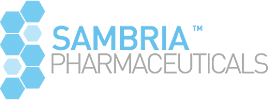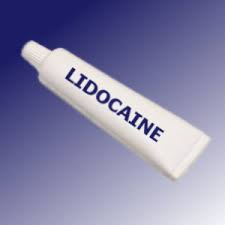Topical Anesthetics Use
There has been a steady, incremental increase in topical anesthetics use among practitioners and their patients to decrease the pain associated with superficial dermatologic, aesthetic, and laser procedures. Numerous lidocaine-containing products are available, but the increase in topical anesthetics use is far outpacing comprehensive reviews regarding their relative safety profiles and appropriate dermatologic uses.
Factors that should be considered to reduce the risk of side effects associated with the topical anesthetics use include the amount of product used, body location, size of the surface area, and duration of product application. Many case reports document adverse outcomes associated with the use of compounded products that the Food and Drug Administration has not approved that have inappropriately high anesthetic concentrations and from topical anesthetics use on excessively large skin surface areas during laser and other treatments.
Lidocaine-containing products play an integral role in cutaneous anesthesia by providing patient comfort with minimal side effects. Careful attention must be paid to the particular anatomic location, the total surface area covered, and the duration of anesthetic skin contact.
Topical anesthetics use has a long history and proven efficacy in decreasing pain with common dermatologic procedures such as shave biopsies, punch biopsies, curettage, and electrosurgery,[1,2,3,4] allowing their easy introduction during laser procedures. Studies have already shown that commonly used lidocaine preparations reduce discomfort associated with the neodymium-doped yttrium aluminum garnet (Nd:YAG) laser hair removal.[5] Topical lidocaine has also been successful in reducing intense sensation during Q-switched laser tattoo removal,[6] and the discomfort associated with the laser treatment of vascular and pigmented lesions.[7,8,9] Before the use of these topical anesthetics, ablative skin resurfacing procedures using carbon dioxide (CO2) and erbium-doped YAG lasers often required IV sedation. With the newer methods of superficial skin resurfacing like single-pass CO2, fractional laser, and plasma skin resurfacing, topical anesthetics have shown to be effective during the procedure.
Is topical anesthetics use safer/more effective than other types of anesthesia to reduce pain?
Topical anesthetics Use Recommendations: The American Academy of Dermatology
- Non-cocaine formulations are preferred over cocaine formulations and recommended for use in office-based procedures.
Strength of recommendation: A Level of evidence: II
- Topical agents are recommended as a first line method of anesthesia for non-ablative laser treatments.
Strength of recommendation: C Level of evidence: III
- Topical anesthesia can be used for performing office-based procedures such as skin biopsy, small excisions, and filler and botulinum toxin injection.
Strength of recommendation: C Level of evidence: III
- The use of topical anesthetic agents is recommended to lessen the pain of injection and reduce the dose of infiltration anesthesia needed for larger procedures.
Strength of recommendation: C Level of evidence: III [11]
There are several methods of effective anesthesia available for superficial dermatologic procedures, including, toxin and filler injections, laser resurfacing, laser tattoo and laser hair removal, among other procedures. The particular procedure plays a role in which type to use. The deeper the dermatologic procedure goes, the more pain sensation the patient feels. Noninvasive topical anesthetics use has proven to be effective in superficial resurfacing procedures[12] and are also commonly used currently to reduce the pain caused by other superficial procedures.
REFERENCES:
1. Shelley W B. The razor blade in dermatologic practice. Cutis. 1975;16:843–845.
2. Juhlin L, Evers H, Broberg F. A lidocaine-prilocaine cream for superficial skin surgery and painful lesions. Acta Derm Venereol. 1980;60(6):544–546. [PubMed]
3. Rosdahl I, Edmar B, Gisslén H, Nordin P, Lillieborg S. Curettage of Molluscum contagiosum in children: analgesia by topical application of a lidocaine/prilocaine cream (EMLA) Acta Derm Venereol. 1988;68(2):149–153. [PubMed]
4. Gupta A K, Sibbald R G. Eutectic lidocaine/prilocaine 5% cream and patch may provide satisfactory analgesia for excisional biopsy or curettage with electrosurgery of cutaneous lesions. A randomized, controlled, parallel group study. J Am Acad Dermatol. 1996;35(3 Pt 1):419–423. [PubMed]
5. Guardiano R A, Norwood C W. Direct comparison of EMLA versus lidocaine for pain control in Nd:YAG 1,064. nm laser hair removal. Dermatol Surg. 2005;31(4):396–398. [PubMed]
6. Kuperman-Beade M, Levine V J, Ashinoff R. Laser removal of tattoos. Am J Clin Dermatol. 2001;2(1):21–25. [PubMed]
7. Ashinoff R, Geronemus R G. Effect of the topical anesthetic EMLA on the efficacy of pulsed dye laser treatment of port-wine stains. J Dermatol Surg Oncol. 1990;16(11):1008–1011. [PubMed]
8. Sherwood K A. The use of topical anesthesia in removal of port-wine stains in children. J Pediatr. 1993;122(5 Pt 2):S36–S40. [PubMed]
10. McCafferty D F, Woolfson A D, Handley J, Allen G. Effect of percutaneous local anaesthetics on pain reduction during pulse dye laser treatment of portwine stains. Br J Anaesth. 1997;78(3):286–289. [PubMed]
11. Topical anesthesia: Recommendations; The American Academy of Dermatology
12. Joseph F, Sobanko, MD*, Christopher J. Miller, MD,* and Tina S. Alster ,MD. Topical Anesthetics for Dermatologic Procedures: A Review. Dermatologic Surgery. 2012
Presented by:
Michael Greenspan, Founder, Sambria Pharmaceuticals. Sambria Pharmaceuticals supplies the medical aesthetic specialties with its NeuroMed brand of topical anesthetics.



